The doctoring of political images became something of a tradition in the last century, with Stalin, Hitler and Mao all airbrushing their enemies from photographs. The latest infrared technology has revealed that something similar may have happened during the English Civil War, with a portrait of Oliver Cromwell apparently having been painted over with an image of the Parliamentarian Sir Arthur Hesilrige, who fell out with Cromwell when he became Lord Protector in 1653.
At first glance, the National Portrait Gallery’s Sir Arthur Hesilrige (pictured below right), inscribed with the date1640 and by an unknown artist, is much like any other painting of a man in armour from the period. Featured in the gallery's new display Hidden: An unseen portrait of Oliver Cromwell, It's evidence of the overwhelming influence of Anthony Van Dyck, who transformed English portraiture in the 17th century, injecting it with a newfound verve, elegance and dynamism. His style of representing high-ranking soldiers, established in his court portraits of the 1630s, continued to be all the rage with both Royalists and Parliamentarians during the years of the English Civil War, and the National Portrait Gallery has several pictures painted in this idiom. Even to the naked eye, however, it is apparent that there is something slightly different about the Hesilrige portrait, and alterations to the line of the left shoulder are the easiest to spot.
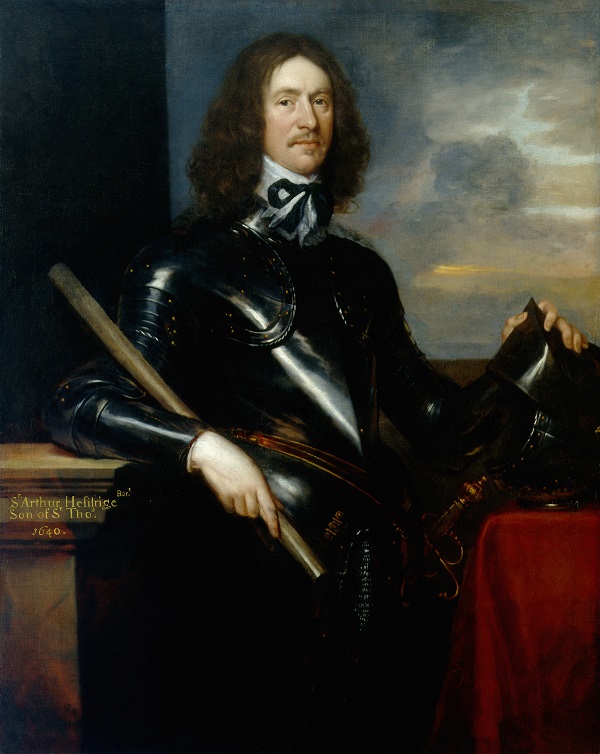 Far from simple adjustments to the composition, however, the Hesilrige portrait conceals traces of an entirely different painting. Infrared reflectography, a technique that uses the longer wavelengths of infrared radiation to "see through" paint that is opaque in visible light, reveals that beneath the upper paint layers is an earlier work that closely resembles a portrait of Oliver Cromwell by Robert Walker, also at the National Portrait Gallery (main picture). The Cromwell portrait, dating from about 1649, the year of Charles I’s execution, differs from the popular "man-in-armour" type slightly but significantly, the addition of a page boy tying a sash around his waist introducing kingly overtones that anticipate Cromwell’s eventual appointment to Lord Protector, a monarchical role in all but name that caused Cromwell to fall out with Hesilrige, who remained committed to the Republican ideal.
Far from simple adjustments to the composition, however, the Hesilrige portrait conceals traces of an entirely different painting. Infrared reflectography, a technique that uses the longer wavelengths of infrared radiation to "see through" paint that is opaque in visible light, reveals that beneath the upper paint layers is an earlier work that closely resembles a portrait of Oliver Cromwell by Robert Walker, also at the National Portrait Gallery (main picture). The Cromwell portrait, dating from about 1649, the year of Charles I’s execution, differs from the popular "man-in-armour" type slightly but significantly, the addition of a page boy tying a sash around his waist introducing kingly overtones that anticipate Cromwell’s eventual appointment to Lord Protector, a monarchical role in all but name that caused Cromwell to fall out with Hesilrige, who remained committed to the Republican ideal.
Catharine MacLeod, curator of 17th-century portraits at the National Portrait Gallery tells us that, "It is not entirely clear whether this was originally a portrait of Cromwell himself, completely repainted as Hesilrige, or whether it was always a portrait of Hesilrige, but painted originally in the pose that came to be so closely associated with Cromwell. This revelation suggests that the portrait of Hesilrige should be dated later than previously thought, to about 1650".
However, if the painting over of the original image is connected to Hesilrige’s dispute with Cromwell, as the Gallery has suggested, the date of the current painting could be even later.
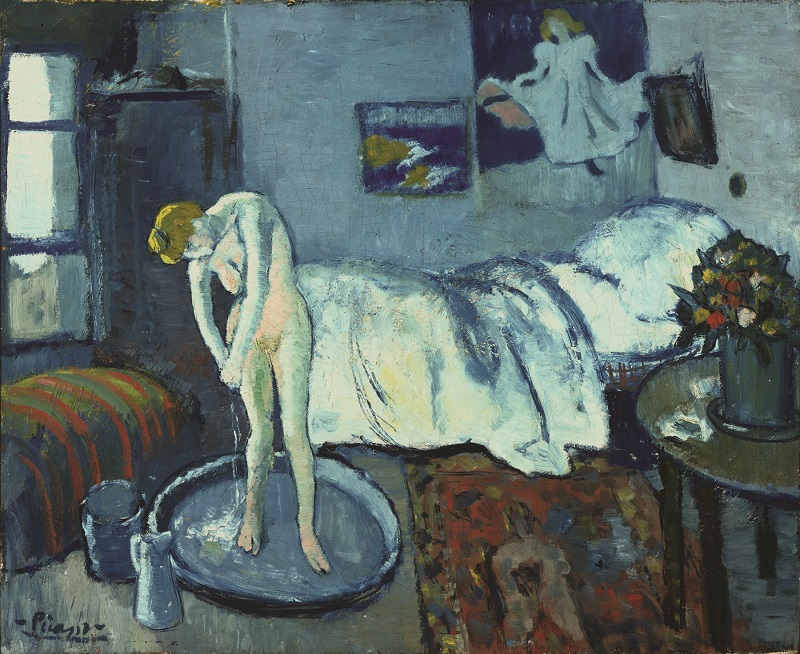 For all the political intrigue that surrounds the Cromwell discovery, in most cases, the reasons for a picture being painted over are prosaic. Many painters simply did not have the resources to buy new canvases and so habitually reused them. But while Ben and Winifred Nicholson carefully reprimed old canvases before resuming painting, Picasso simply painted over unwanted work, with the result that the older, rejected composition is often discernible even without the help of infrared imaging.
For all the political intrigue that surrounds the Cromwell discovery, in most cases, the reasons for a picture being painted over are prosaic. Many painters simply did not have the resources to buy new canvases and so habitually reused them. But while Ben and Winifred Nicholson carefully reprimed old canvases before resuming painting, Picasso simply painted over unwanted work, with the result that the older, rejected composition is often discernible even without the help of infrared imaging.
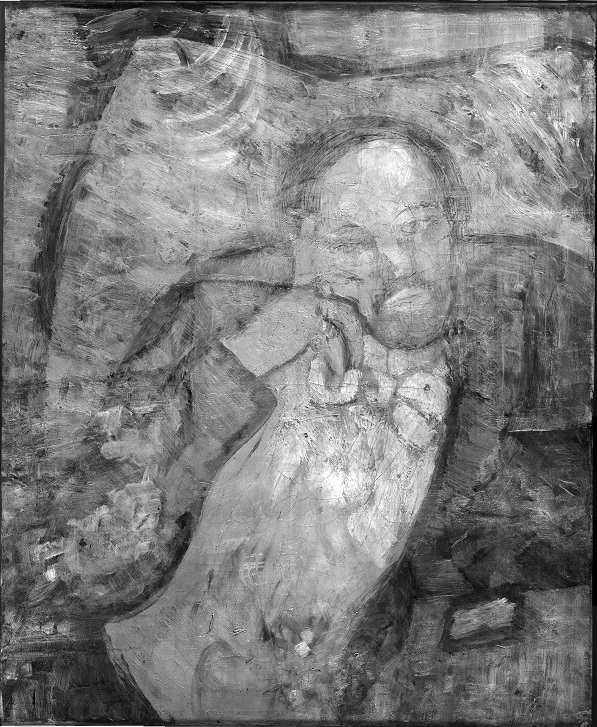 Last month, a portrait of a bearded man in a suit and bow tie, his head resting on his hand, (pictured left) was discovered beneath Picasso’s celebrated early painting The Blue Room, 1901 (pictured above right). The ensuing frenzy of speculation about the identity of the man, believed at one point to be Picasso’s dealer, Ambroise Vollard, shows the extent to which such discoveries capture the public imagination. The concealment of one image by another, especially where it involves a famous work by an artist of mythic status, introduces an element of mystery that appeals to the inner detective in us all, but also speaks to a very human urge to treat art as autobiography. A hidden painting offers tangible evidence of the artist’s existence beyond the confines of the work of art itself, while the revelatory process of unearthing something that has been deliberately concealed appeals to our most basic, nosey-parker instincts.
Last month, a portrait of a bearded man in a suit and bow tie, his head resting on his hand, (pictured left) was discovered beneath Picasso’s celebrated early painting The Blue Room, 1901 (pictured above right). The ensuing frenzy of speculation about the identity of the man, believed at one point to be Picasso’s dealer, Ambroise Vollard, shows the extent to which such discoveries capture the public imagination. The concealment of one image by another, especially where it involves a famous work by an artist of mythic status, introduces an element of mystery that appeals to the inner detective in us all, but also speaks to a very human urge to treat art as autobiography. A hidden painting offers tangible evidence of the artist’s existence beyond the confines of the work of art itself, while the revelatory process of unearthing something that has been deliberately concealed appeals to our most basic, nosey-parker instincts.
Several Picasso paintings have been found to have images hidden beneath them, and the National Gallery of Art, Washington, has found an astonishing four layers of earlier work beneath another blue period painting, The Tragedy, 1903. Interestingly, Picasso’s idiosyncratic painting practice was not all to do with making economies and Picasso began to regard the layers of rejected compositions as an integral part of the final painting, saying a painting was the “sum of destructions”. Indeed, the earlier paintings are often evident in the final works, and provide the visual clues that prompt further investigation.
 The obliteration of an image is not necessarily an artist's own work, however. Recently, a conservator at the Fitzwilliam Museum, Cambridge, discovered that a whale had been painted out of a 17th-century Dutch beach scene (pictured right: Hendrick van Anthonissen, View of Scheveningen sands, with a stranded sperm whale, c.1641, Fitzwilliam Museum, Cambridge). Until subsequent layers of paint were removed to reveal the beached whale at the heart of the picture, the crowds of people populating the scene had been gazing, rapt, at nothing in particular, a hefty clue that the true subject of the painting had been lost. The reasons for the covering up of the whale offer as much insight into the art market of the past as Picasso’s hidden compositions tell us about his artistic persona, and it seems the alteration may have been made in the 18th century simply to make the painting more saleable, in line with contemporary tastes.
The obliteration of an image is not necessarily an artist's own work, however. Recently, a conservator at the Fitzwilliam Museum, Cambridge, discovered that a whale had been painted out of a 17th-century Dutch beach scene (pictured right: Hendrick van Anthonissen, View of Scheveningen sands, with a stranded sperm whale, c.1641, Fitzwilliam Museum, Cambridge). Until subsequent layers of paint were removed to reveal the beached whale at the heart of the picture, the crowds of people populating the scene had been gazing, rapt, at nothing in particular, a hefty clue that the true subject of the painting had been lost. The reasons for the covering up of the whale offer as much insight into the art market of the past as Picasso’s hidden compositions tell us about his artistic persona, and it seems the alteration may have been made in the 18th century simply to make the painting more saleable, in line with contemporary tastes.
The possibility of finding a painting hidden beneath another is so compelling that it has led to some controversial and speculative investigations. In 2011, Dr Maurizio Seracini of the University of California sparked protests by art historians when he drilled holes in a 16th-century fresco in Florence’s Palazzo Vecchio, looking for evidence of Leonardo’s lost wall painting, The Battle of Anghiari. Despite Seracini's insistence that traces of pigment indicated the presence of Leonardo’s fabled painting, investigations were halted when the Italian authorities refused to authorise further drilling.
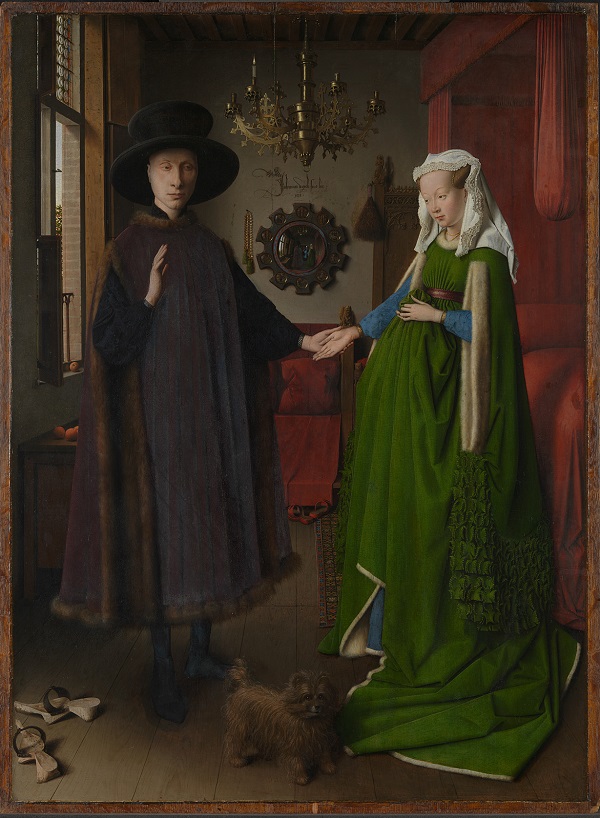 Happily, easel paintings can be studied without the use of drills, and infrared reflectography has for some time been a standard tool available to museums. While hidden paintings constitute the most newsworthy finds, it is more usual, but no less fascinating to find an artist’s underdrawings, made before painting started. Such discoveries are sufficiently numerous and informative that in 2002, the National Gallery staged an exhibition dedicated to underdrawings in Renaissance paintings.
Happily, easel paintings can be studied without the use of drills, and infrared reflectography has for some time been a standard tool available to museums. While hidden paintings constitute the most newsworthy finds, it is more usual, but no less fascinating to find an artist’s underdrawings, made before painting started. Such discoveries are sufficiently numerous and informative that in 2002, the National Gallery staged an exhibition dedicated to underdrawings in Renaissance paintings.
The National Gallery’s studies have provided a wealth of information about the practices of individual artists and their workshops, and Jan Van Eyck’s The Arnolfini Portrait, 1434, has been a particularly fruitful subject (pictured above left). Unusually for this period, the portrait appears to have been made entirely by Van Eyck himself without any input from his workshop, so that the underdrawings provide a clear sense of his design process. From the first underdrawing to the finished painting many of the objects in the room were changed considerably, and the dog, often interpreted as of great symbolic significance, was not underdrawn at all, indicating that it was an afterthought. Van Eyck’s changes allow us not only to establish the painting’s evolution, but also reveal the parts of the painting that were hardest for him to resolve, and those he was able to address on the hoof.
Underdrawings may ultimately be of more interest to specialists than the general public, but they can affect our understanding of a painting as dramatically as the discovery of a hidden painting.








![SEX MONEY RACE RELIGION [2016] by Gilbert and George. Installation shot of Gilbert & George 21ST CENTURY PICTURES Hayward Gallery](/sites/default/files/styles/thumbnail_125_x_125_/public/mastimages/Gilbert%20%26%20George_%2021ST%20CENTURY%20PICTURES.%20SEX%20MONEY%20RACE%20RELIGION%20%5B2016%5D.%20Photo_%20Mark%20Blower.%20Courtesy%20of%20the%20Gilbert%20%26%20George%20and%20the%20Hayward%20Gallery._0.jpg?itok=3oW-Y84i)





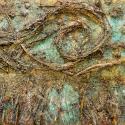
Add comment